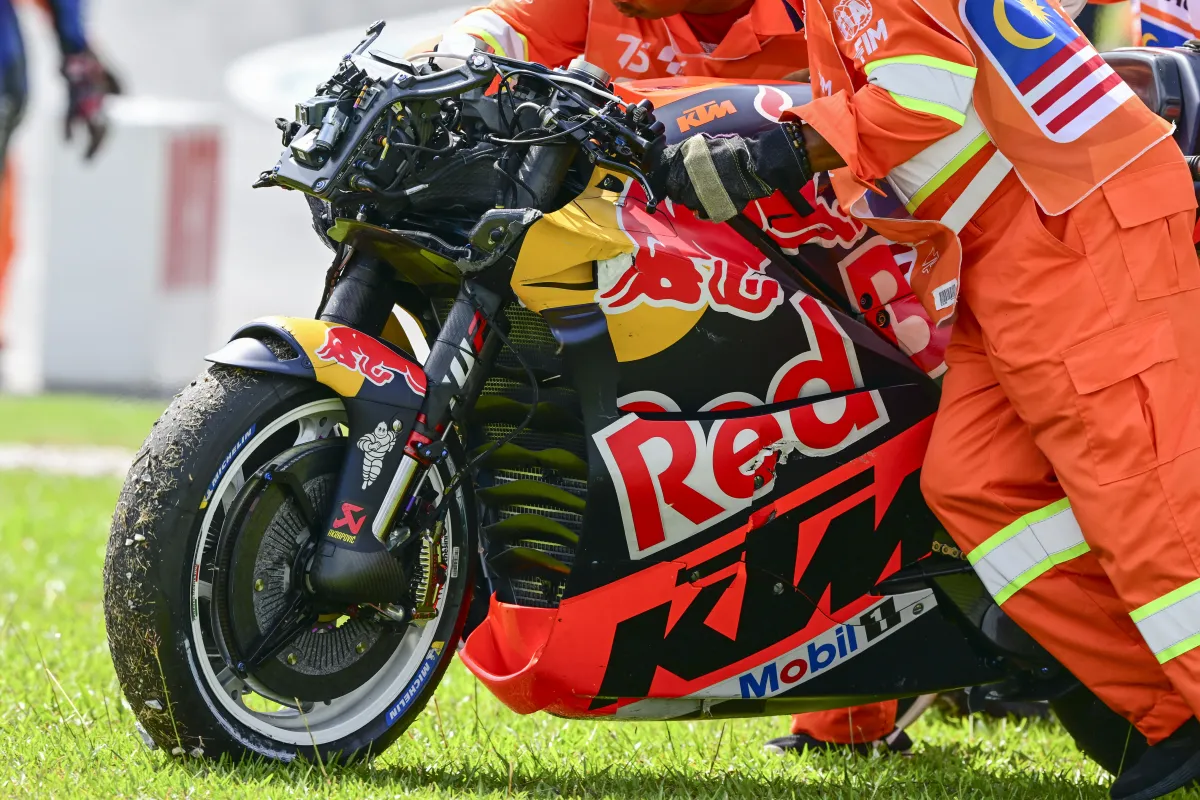KTM, the renowned Austrian motorcycle manufacturer known for its aggressive expansion and innovation, is grappling with serious financial challenges. The company is currently undergoing a major restructuring process, which includes significant job cuts as part of a broader effort to address its mounting financial difficulties. Following an initial wave of 250 redundancies, KTM has now announced that an additional 500 positions will be eliminated in the coming months. This reduction in workforce is part of a strategy designed to streamline operations, reduce costs, and help the company recover from its substantial financial woes.

KTM’s financial troubles have been magnified by an overwhelming debt load. According to Der Standard, the Austrian newspaper that broke the news of the layoffs, the company is currently burdened with €796 million in debt, spread across 1,630 creditors. The list of creditors is extensive and diverse, with nearly 180 banks included among them. The scale of KTM’s financial obligations is stark, with the creditor list spanning 34 pages—13 of which are dedicated to Austrian creditors, while the remaining pages cover international institutions from countries such as Germany, France, India, Japan, and the USA. Notably, the list includes a mix of major financial institutions and smaller businesses, some of which are local to Austria, such as bakeries and coffee suppliers.
The debt situation has placed KTM in a precarious position. Despite this, the company has sought to reassure stakeholders that it remains operational and will continue to function after the restructuring process is completed. Peter Vogl, the administrator overseeing the company’s financial restructuring, has expressed confidence that KTM AG, along with its subsidiaries KTM Components and KTM F&E, will continue to exist after the job cuts and restructuring.

However, the timeline for when these layoffs will be finalized remains uncertain. The company is working to implement a plan that will not only ease its debt burden but also help restore financial stability and operational efficiency. While this process is ongoing, the company’s future hinges on whether it can emerge from this difficult phase and return to profitability.
The decision to lay off 750 employees marks a significant change in the company’s workforce structure. KTM is known for its strong presence in both the consumer and competitive motorcycle markets, with a reputation for high-performance models and motorsport success. However, the layoffs underscore the reality that even industry leaders are not immune to financial difficulties.

For the employees affected, the news represents a devastating blow. The company has not yet disclosed the specific departments or locations where the layoffs will be concentrated, but it is clear that KTM is making sweeping changes to its operations. These cuts come at a time when many companies are reevaluating their staffing levels due to the economic uncertainties of the past few years. The restructuring process is expected to have long-lasting effects on the company’s internal culture, operations, and its ability to innovate moving forward.
Despite its financial troubles, KTM remains committed to its presence in MotoGP, the pinnacle of motorcycle racing. The manufacturer is under contract to compete in the sport until at least the end of the 2026 season, and its participation in the prestigious championship has not been affected by the layoffs. However, the company’s financial struggles have led to a temporary halt in the development of its RC16 MotoGP bike.

The RC16, KTM’s flagship MotoGP bike, has shown promise in recent years, with notable performances from its riders. Nevertheless, the halt in development raises questions about the company’s ability to remain competitive in the world’s premier motorcycle racing series. With manufacturers like Yamaha, Honda, Ducati, and Suzuki continuously advancing their technology, KTM’s temporary freeze on further bike development could put them at a disadvantage when the 2024 season begins.
KTM’s commitment to MotoGP also highlights the balancing act the company must perform: keeping a foothold in competitive motorsport while also addressing its financial instability. The brand’s continued participation in the championship is essential not just for its marketing and brand presence, but also for maintaining its edge in terms of technological innovation. Racing success has always been at the heart of KTM’s identity, and their performance in MotoGP is seen as an integral part of their future growth strategy.
The future of KTM hinges on its ability to emerge from this restructuring phase stronger and more financially stable. The company faces an uphill battle as it works to reduce its debt and streamline its operations. The job cuts are a necessary step, but they come at the cost of the company’s workforce, and the true long-term impact on its organizational structure remains to be seen.

As for KTM’s competitors, the company’s struggles may create new opportunities for brands that are able to weather the storm and invest in innovation. Companies that can capitalize on KTM’s potential weaknesses, especially in the MotoGP space, could see a chance to close the gap in the world of competitive motorcycle racing.
Ultimately, KTM’s fate will depend on how effectively it can manage its finances and restructure its business model to be more sustainable. If the company can stabilize its operations and continue to leverage its technological expertise in motorsports, it may yet be able to reclaim its position as one of the leading players in the global motorcycle market.
The upcoming months will be critical in determining whether KTM can survive its financial crisis and emerge as a more agile and competitive entity, both on the racetrack and in the consumer market. However, one thing is clear: KTM’s resilience will be tested like never before, and only time will tell whether the Austrian manufacturer can navigate these choppy waters and race into a brighter future.





